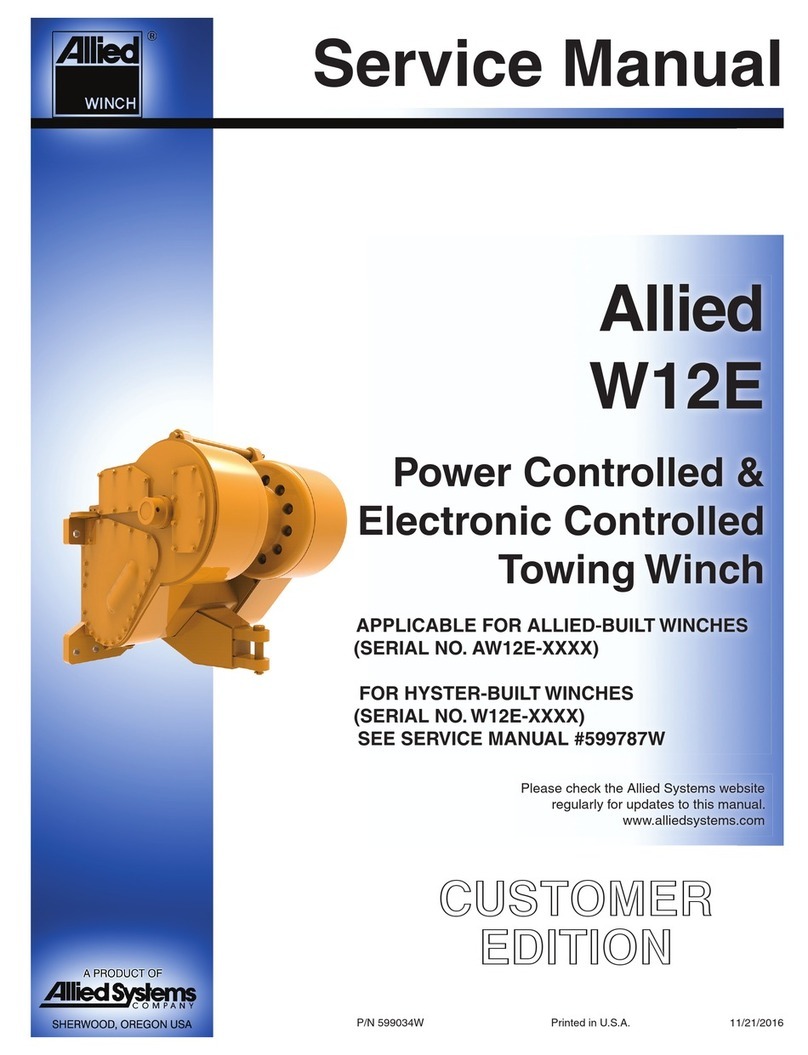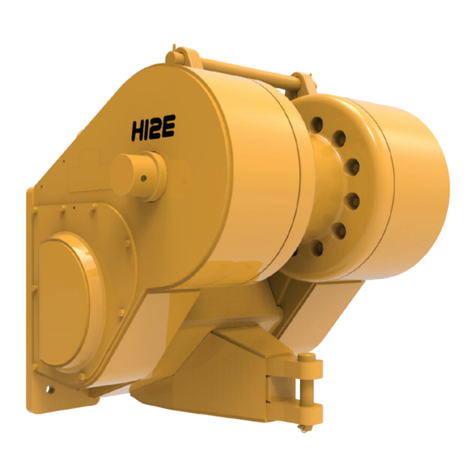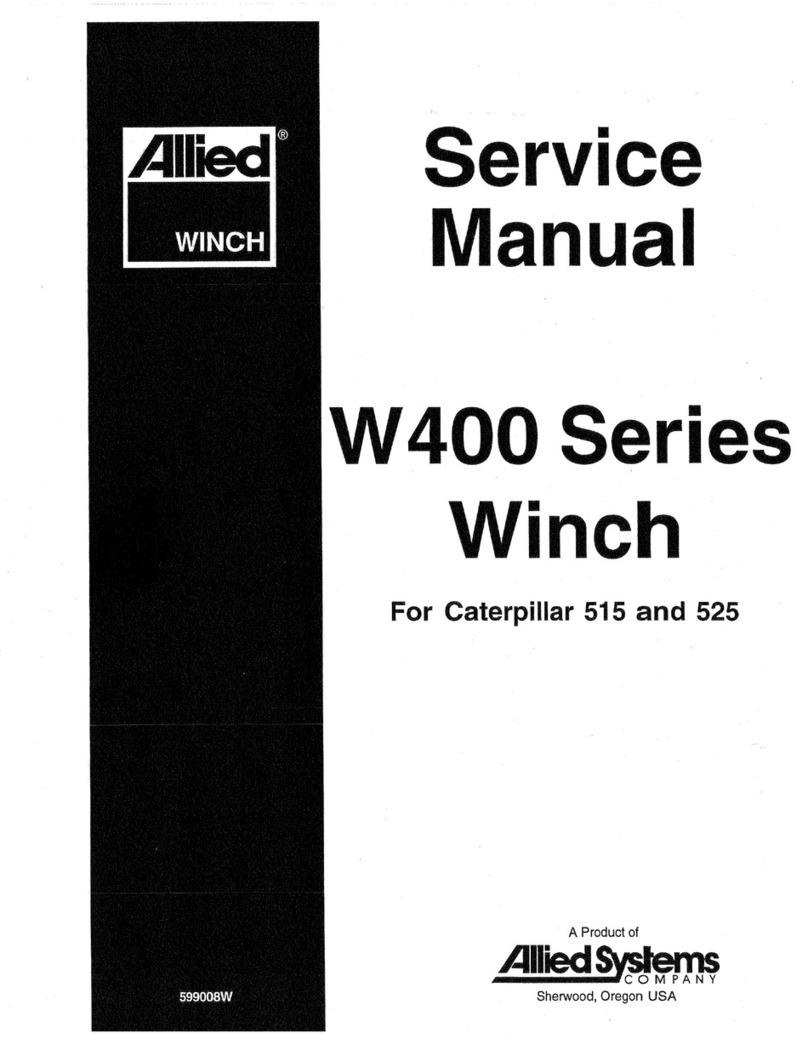
v
Contents
Safety Summary..........................................................i
General......................................................................... 1-1
Introduction........................................................................ 1-1
Description ........................................................................ 1-1
Unit Identification........................................................ 1-2
Serial Number Codes................................................. 1-3
Nameplate.................................................................. 1-3
Specifications .................................................................... 1-4
Drum Wire Rope Capacities....................................... 1-4
Hydraulic Specifications ............................................. 1-4
Oil Specifications........................................................ 1-4
Oil Capacity ................................................................ 1-4
Torque Specifications ................................................. 1-5
Gear Train ......................................................................... 1-6
FREESPOOL Operation............................................. 1-7
Operation and Control ....................................................... 1-8
Hydraulic System............................................................... 1-9
Planetary Reducer ..................................................... 1-9
Brake ........................................................................ 1-10
Motor ........................................................................ 1-11
Directional Control Manifold ..................................... 1-12
Logic Control Manifold.............................................. 1-12
HI-SPEED Limit Switch............................................ 1-12
Electronic Control Panel ........................................... 1-12
Sequence of Operation.................................................... 1-13
BRAKE-ON............................................................... 1-13
LINE-IN..................................................................... 1-14
HI-SPEED LINE-IN................................................... 1-16
LINE-OUT................................................................. 1-18
HI-SPEED LINE-OUT............................................... 1-20
FREESPOOL ........................................................... 1-22
Schematics...................................................................... 1-25
Troubleshooting ..................................................... 2-1
General.............................................................................. 2-1
Step-By-Step Pump & Controller Troubleshooting............. 2-2
Troubleshooting Analysis Check Chart.............................. 2-4
Service ......................................................................... 3-1
General ............................................................................. 3-1
Maintenance...................................................................... 3-1
Maintenance Points.................................................... 3-1
Maintenance Schedule............................................... 3-1
Checks Before Operation ........................................... 3-2
Checks During Operation........................................... 3-2
FREESPOOL Drag Adjustment......................................... 3-2
Hydraulic System Pressure Checks .................................. 3-2
Preparation................................................................. 3-2
Pressure Gauges ....................................................... 3-2
Standby Pilot Supply Pressure Check........................ 3-2
Maximum Pilot Supply Pressure Check ..................... 3-3
Counterbalance Valve Pressure Check...................... 3-3
Motor Supply Pressure Check.................................... 3-3
Brake Pressure Check................................................ 3-3
Brake Valve Pressure Check ...................................... 3-3
FREESPOOL Pressure Check................................... 3-4
High Speed Pressure Check...................................... 3-4
LINE-IN Pressure Check............................................ 3-5
LINE-OUT Pressure Check ........................................ 3-5
Valve Setting Procedures .................................................. 3-5
Load Sense Relief Valve ............................................ 3-5
Pilot Supply Reducing Valve ...................................... 3-5
Hydraulic System Pressure Tests Table............................. 3-6
Repairs ........................................................................ 4-1
General ............................................................................. 4-1
Winch Removal.................................................................. 4-1
Winch Disassembly ........................................................... 4-1
Intermediate & FREESPOOOL Shaft Removal.......... 4-2
Drum Shaft & Drum Removal..................................... 4-5
Hydraulic System Disassembly.................................. 4-9
Motor Shaft Removal & Disassembly ....................... 4-14
Motor Disassembly................................................... 4-17
Brake Disassembly................................................... 4-20
Planetary Reducer Disassembly .............................. 4-22
Winch Assembly .............................................................. 4-24
Visual Inspection ...................................................... 4-24
Planetary Reducer Assembly................................... 4-26
Brake Assembly ....................................................... 4-28
Motor Assembly........................................................ 4-30
Motor Shaft Assembly & Installation......................... 4-33
Hydraulic System Assembly..................................... 4-36
Drum & Drum Shaft Installation................................ 4-41
Intermediate & FREESPOOL Shaft Installation ....... 4-46
Winch Installation ............................................................ 4-50
Contents






























